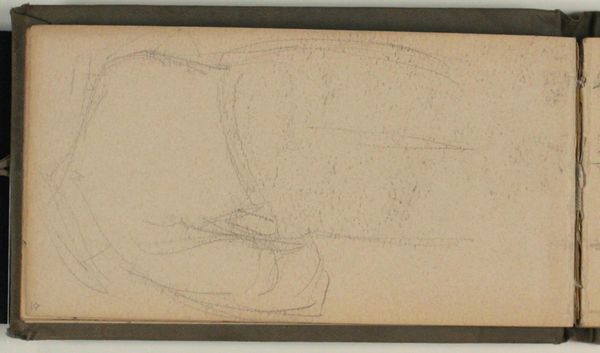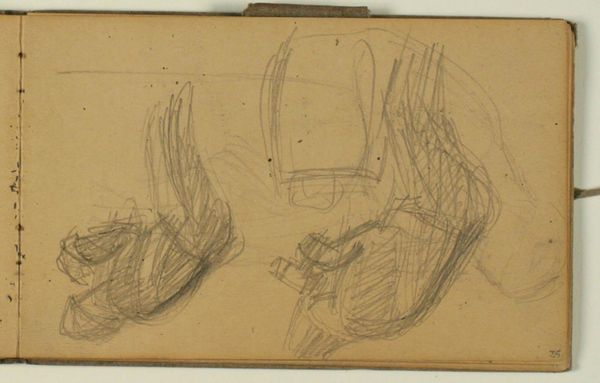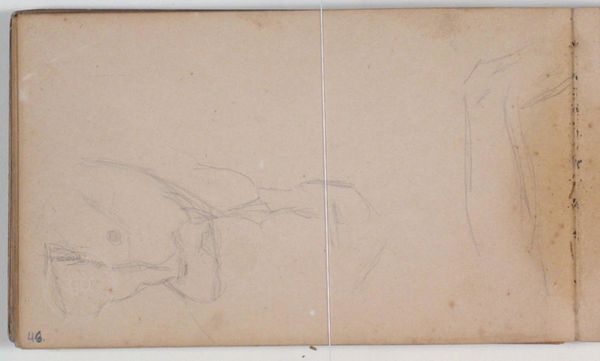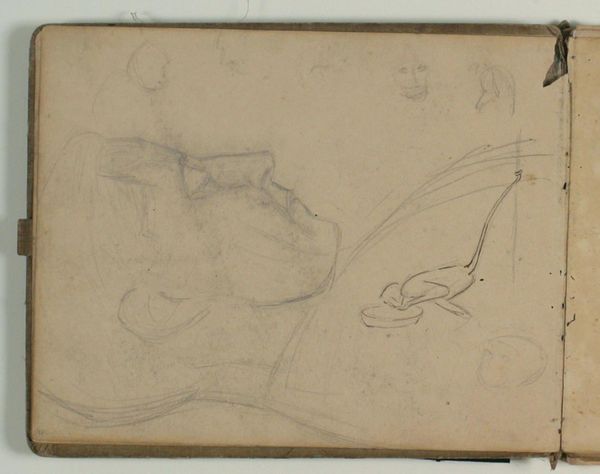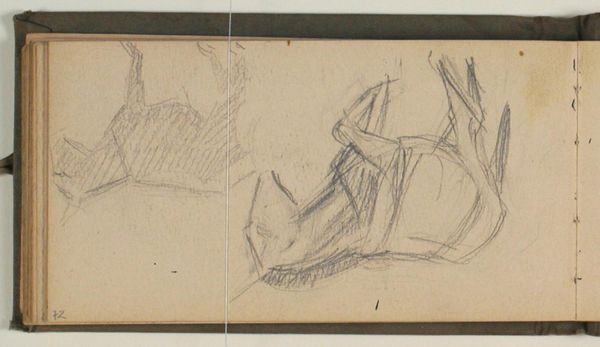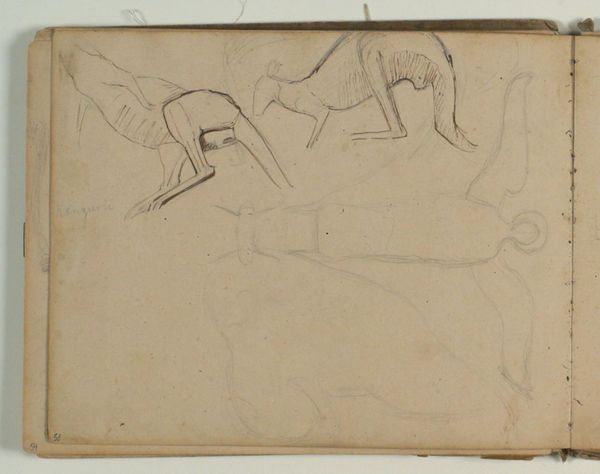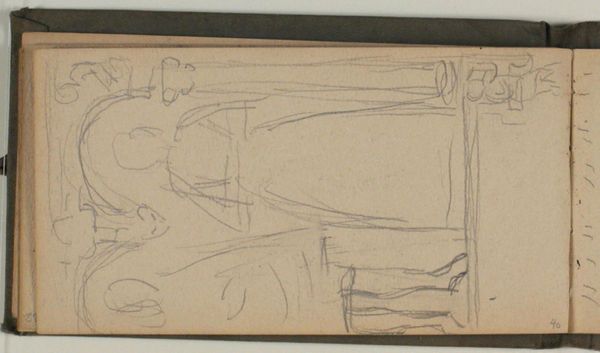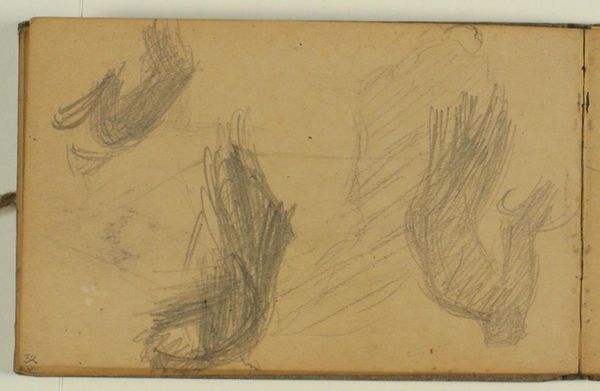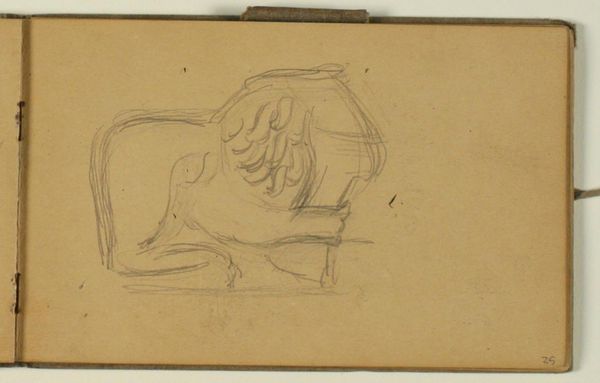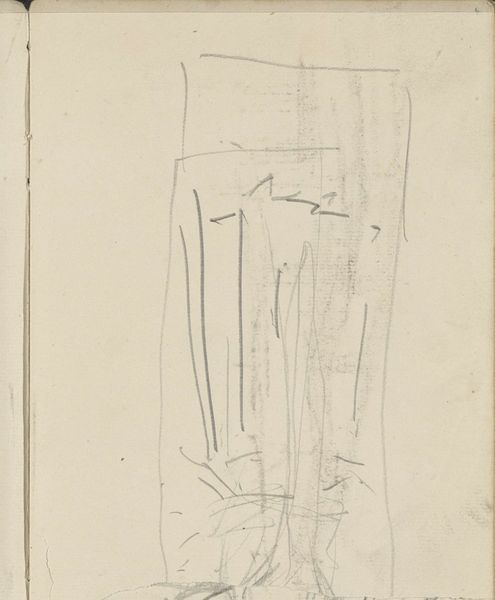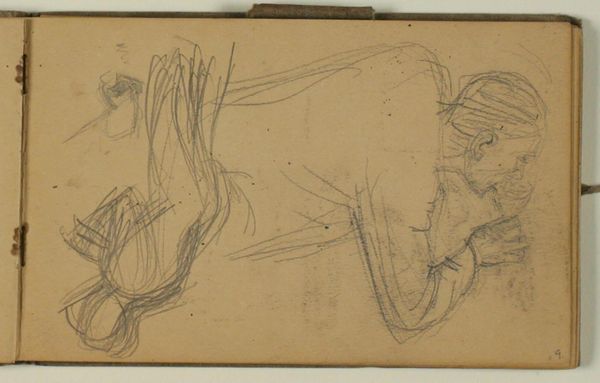
drawing, paper, pencil
#
portrait
#
drawing
#
figuration
#
paper
#
pencil
Dimensions: 114 mm (height) x 183 mm (width) x 9 mm (depth) (monteringsmaal), 113 mm (height) x 182 mm (width) (bladmaal)
Editor: Here we have "Figurskitser," figure sketches, by Niels Larsen Stevns, made between 1900 and 1904, using pencil on paper. They seem like very preliminary studies, almost like scribbles. I wonder, what can we really learn from sketches like these? Curator: Precisely. It's not about a polished product, but about seeing the artist's thought process. Consider the Danish art scene at the turn of the century; there was a real push for naturalism, a focus on everyday life. But there was also an increasing interest in psychology and how we perceive the world. What do you notice about how Stevns renders these figures? Editor: Well, they're fragmented. The lines are broken and overlap. They are hard to make out, very informal. Curator: Exactly. The incompleteness suggests a mind actively searching, rather than passively recording. Think about the rise of photography at this time. It was challenging traditional artistic roles. Artists were asking, what can painting and drawing do that photography cannot? These quick studies suggest the inner workings are of high priority to the artist. The sketch is less about a specific figure, and more about capturing movement or a fleeting impression. How do you think this might challenge academic norms? Editor: Maybe, like the work is actively defying the idea of the 'perfect' classical figure and also moves toward something…more raw and intimate. It reflects modern sensibility and even a rejection of tradition in its looseness? Curator: Nicely put! They give us insights into the art world which increasingly valued capturing the essence of lived experiences, or interior impressions, over precise depictions. A glimpse into how cultural shifts influenced artistic techniques and goals. Editor: It is fascinating to see how social and artistic tensions play out, even in something as seemingly simple as a sketch. It really makes you rethink how you approach art history.
Comments
No comments
Be the first to comment and join the conversation on the ultimate creative platform.
